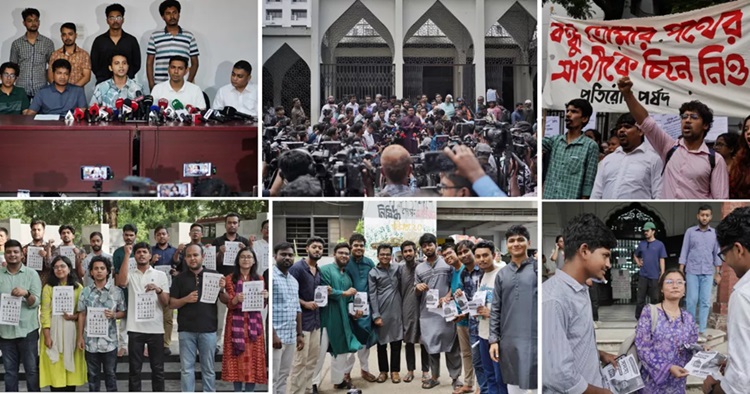DUCSU Election 2025: A Race of Fragile Alliances and Shifting Sentiments


As the Dhaka University Central Students' Union (DUCSU) election 2025 approaches, an analysis of social and digital media trends, sourced from Shared Today, reveals a fragmented and highly competitive landscape. The traditional political dominance of single panels appears to be over, with a mixed outcome now the most probable scenario.
The Fallout of Fragmentation
The most significant dynamic shaping this election is the visible disunity within the BGCS panel, which emerged from the July uprising. Several prominent BGCS leaders—including Tahmid Al Mudasir, Ashiqur Rahman Jim, Abu Salehin Ayon, and Sanjana Afifa Aditi—have decided to run independently or join rival panels. This internal discord has led to the resignations of key figures like Moktosen Muktar, who cited frustration with "party-linked politics," and Mahin Sarkar, who is now contesting for General Secretary from another independent panel. Abdul Kader, the BGCS VP candidate, acknowledged that these divisions could negatively impact the panel's prospects. This fragmentation is likely to damage voter trust in the BGCS's unity and effectiveness and increases the risk of vote splitting.
JCD's Strategic Advantage
This internal disarray within the BGCS has created a strategic opening for the Jatiyatabadi Chhatra Dal (JCD). The JCD panel, with VP candidate Md. Abidul Islam Khan and GS candidate Sheikh Tanvir Bari Hamim, has a disciplined, nationwide network aligned with the BNP. While the July movement activists are split, JCD has been able to consolidate its support across halls, giving it an advantage. Social media analysis indicates that JCD has a high organizational presence and steady news visibility, suggesting stable momentum.
The Rise of Independent Candidates
In contrast to the BGCS's struggles, the Independent Alliance led by Umama Fatema is gaining significant traction. With prominent BGCS figures now running independently, Umama's panel may attract disillusioned BGCS supporters. Her campaign is positioned as a "fresh face" with strong credibility from the July uprising, appealing to voters who are disenchanted with traditional party politics.
The Two-Sided Voter Psychology
According to Shared Today's analysis, the student electorate is split into three main psychological groups:
Anti-establishment, movement-driven voters (30-40%):
These students wish to avoid BNP or Jamaat-linked panels and are motivated by the anti-establishment sentiment of the July movement.
Pragmatic/strategic voters (30%+):
This group may vote for JCD, expecting it to have greater influence and resources if the BNP forms the next national government.
Ideological niches (20-30%):
These voters have dedicated but narrower bases, supporting panels like the Left Alliance, Shibir, or Odhikar.
Potential Outcomes: A Tale of Two Scenarios
Based on these dynamics, Shared Today presents two likely scenarios for the election outcome:
Scenario A: July Movement Split:
If the BGCS, Independent, and Odhikar panels run separately and their votes fragment, JCD is likely to win both the VP and GS positions. The VP race would be a tight contest between JCD's Abidul Islam Khan (~38-42% support) and Independent's Umama Fatema (~25-28%). JCD's Hamim would have a strong edge in the GS race (~40-45%) due to the BGCS's weakness.
Scenario B: July Movement Consolidation:
If activists from the July movement consolidate their efforts through tactical voting, a split top slate becomes a real possibility. In this scenario, Umama Fatema could win the VP position (~42-45%), while the GS race remains a toss-up between JCD's Hamim (~35-38%) and a movement-backed candidate bloc (~32-35%).
The election's final result hinges on which path the students choose: will they stand together to build a new political force, or will their divisions allow the more organized, traditional parties to reclaim the space? The answer lies with the nearly 40,000 students who will cast their votes on September 9.
